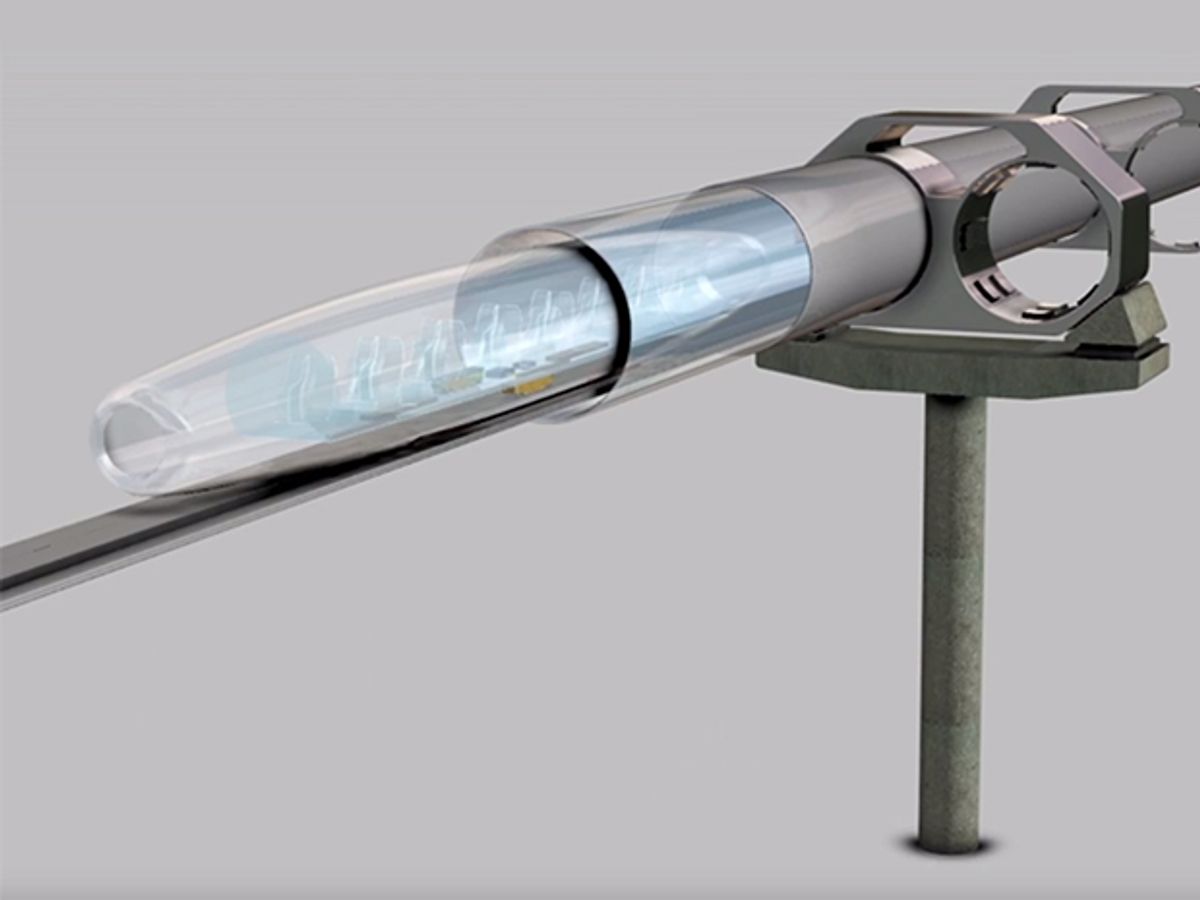The forward motion of its subsonic, people-carrying pods will provide the necessary magnetic levitation as a side effect, says Hyperloop Transportation Technologies, a Southern Calif.-based startup, in an announcement made this morning.
Dirk Ahlborn, the CEO and founder of HTT, told IEEE Spectrum that this passive leviation saves energy and trouble. “One of the biggest problems is the need for a high-powered track; this allows us to achieve leviation without having power stations all along the track,” he said.
Forward motion is important to HTT as well, which has been generating news stories with some regularity as it courts partners and investors to help realize Elon Musk’s 2013 vision of a partially evacuated, superfast tubular train: the Hyperloop. Back in March HTT said it had come to an agreement with the government of Slovakia to explore building a track in that country. Later this week, the company is to stage a media event in Las Vegas.
The passive levitation system, called Inductrack, was developed in the 1990s at Lawrence Livermore National Labs, in California. It works by lining the bottom of the pod with permanent magnets, placed in a so-called Halbach array so as to induce a repelling field when they pass over shorted, that is, non-powered, electromagnetic coils on the railbed. Because the maglev effect is passive, any power cutoff would both slow the pod and cause it to settle down on the track.
“The levitating force becomes effective at very low vehicle speeds and remains constant at high speeds,” wrote the inventor, the late Richard F. Post, of Livermore, in a presentation at Stanford University in 2005. An accompanying slide shows that—at least in the non-vacuum-packed maglev train envisaged at Livermore—half of the maximum lift force is achieved at a speed of just 1.2 kilometers per hour, or 0.75 mph. That’s about the speed of a racing turtle.
The high-speed HTT system would be tuned differently, so its pods would levitate only at a higher velocity, about 10 meters per second, Ahlborn says. At that point the pod would be just a centimeter or two above the track.
“We licensed the technology exclusively for HTT,” he said. “Dr. Post passed away a year ago,, but we met in the early days, and he was very excited about the technology.”
At least one other startup, the similarly named Hyperloop Technologies, is also pursing the Hyperloop, although it seems to want to buoy its pods on a cushion of air. The same goes for a number of the student teams that have participated in competitions for the best Hyperloop design.
Ahlborn argues that air cushioning would be harder to achieve, given the low-pressure inner environment of the tube. He said it would also be less comfortable fot the passengers, for instance by making it harder to bank on turns.
There’s no word yet on the preferred mode of levitation of the latest commercial entry: Transpod, of Toronto. Transpod says that later this year it will unveil a plan to get a Hyperloop up and running by 2020.
Philip E. Ross is a senior editor at IEEE Spectrum. His interests include transportation, energy storage, AI, and the economic aspects of technology. He has a master's degree in international affairs from Columbia University and another, in journalism, from the University of Michigan.



